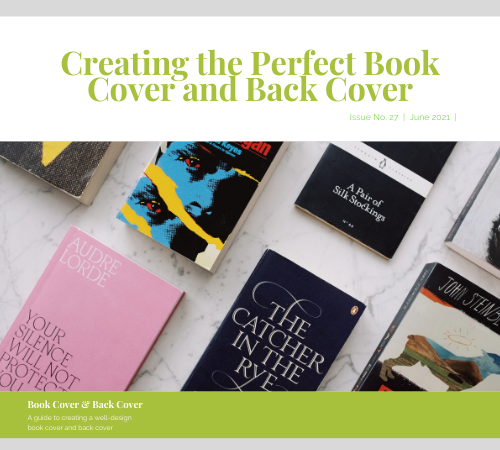Typically, a book is rated by its appearance (book cover, back cover description, and quality of the inside contents). Some readers continue to believe the once-popular assumption that all self-published books are of lower quality, including spelling and grammatical problems, and are no match for the conventional (traditional) publishing with which they compete.
What the Writer/Author Needs
When target audiences consider purchasing a book, the book cover is the first thing they will notice. If they are intrigued by the book’s cover, they will read the back cover description. If the back cover description is well-written and compelling, the internal pages will be skimmed. Skimming pages may also refer to viewing online snippets and sample pages in the digital era.
Thus, while attempting to self-publish a book of conventionally published quality, it makes sense to execute the following two suggestions:
- Well-Design Book Cover
- Well-Written Back Cover Description
Well-Design Book Cover
When selecting a professional book cover designer, there are a few things to look for. This increases the chances that you will be satisfied with the finished result.
Before choosing a cover artist, look at their web portfolio to see examples of their previous work. The greatest cover designers are those that are knowledgeable about your genre, understand how that genre book’s cover should appear, and are capable of creating creative imagery. Prices for book covers vary significantly based on the level of complexity in the design, but a simple digital front cover design may start at $100.
- Submit a request for a high-resolution stock image. Utilizing a high-resolution image will assist you to avoid creating final distorted, pixilated, or blurred images. A professional cover designer will be responsible for collecting the image and usage license and will provide you with an estimate of the pricing of the stock pictures.
- Ascertain that the book cover’s font is readable and consistent with the book’s general tone. Experiment with various fonts and colors. The book’s title should be written in a typeface that matches the tone of the material and is legible on a thumbnail-sized cover.
- Include a one-line quotation. A one-line quotation from a reputable source (well-known author, blogger, review, etc.).
- Include a shoutout line. Is there no quotation? Utilize an enticing tagline that poses a question, or use a memorable sentence from the book that entices the reader to learn more. Excellent shoutout lines are unique, succinct, and directly related to the story’s central theme.
- Include a line or two describing your qualifications. Have you achieved prominence on a reliable bestsellers list? Have you been a recipient of a prominent literary award? A target audience who sees this on the cover of your self-published book may be more inclined to buy.
Well-Written Back Cover Description (BLURB)
After attracting the target audience’s attention with an eye-catching book cover, you need to pique their interest with an intriguing blurb. This is how:
- You should restrict your description to no more than 200 words. A typical back cover description is around two or three paragraphs long and contains around 200 words. You want to capture your reader’s attention fast and with as few words as possible. Two hundred words divided into a handful of paragraphs is more readable. It’s usually better to draft your blurb without regard for the word limit and then revise to tighten the language.
- Choose the appropriate terms. Concentrate on the story’s general narrative while stressing the atmosphere readers might anticipate from the book. Utilize specific terms that communicate the book’s tone to do this. For instance, if your work is a thriller, you may include the phrases haunt, escape, and capture. If it’s a romance, utilize terms such as soul, warmth, and yearning.
- Immediately establish the important characters. The characters are the vehicles via which the reader journeys through the struggle and encounters the story’s overarching theme or message. By presenting the major characters in the first few words of your blurb, you may rapidly pique the reader’s interest in the character and their conflict-driven goal.
- Indicate the primary source of contention. Bring the narrative to a close without giving too much away. What are the characters’ motivations for working, battling, and striving? Include no shocks or twists, but make allusions to them. By captivating them with your blurb, you can demonstrate what they may anticipate from reading the book.
- Utilize the five 5 W’s-and -How system to entice readers. This framework is comparable to the Five Ws of journalism, and you can use this to construct an engaging book blurb.
Are you looking for a literary agent? Handing your book to publishers is a daunting task. However, companies like Quantum Discovery can help you with your needs when it comes to having your book delivered to the right publisher. Contact our professionals by calling (888) 755-6875 or visiting quantumdiscovery.net to know more.
